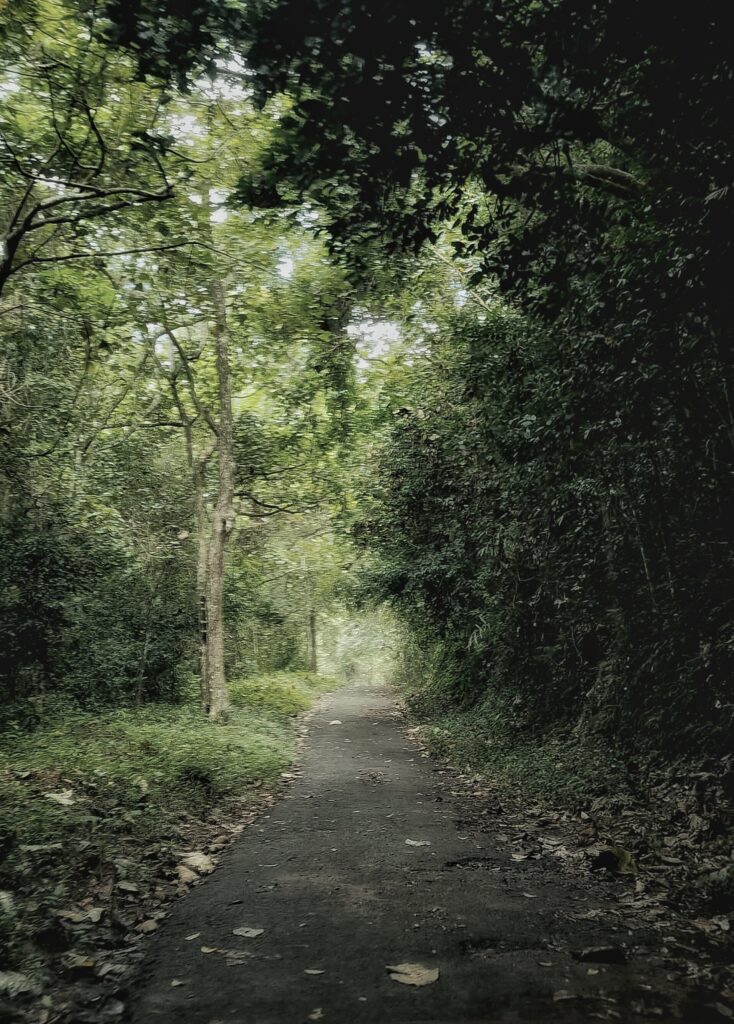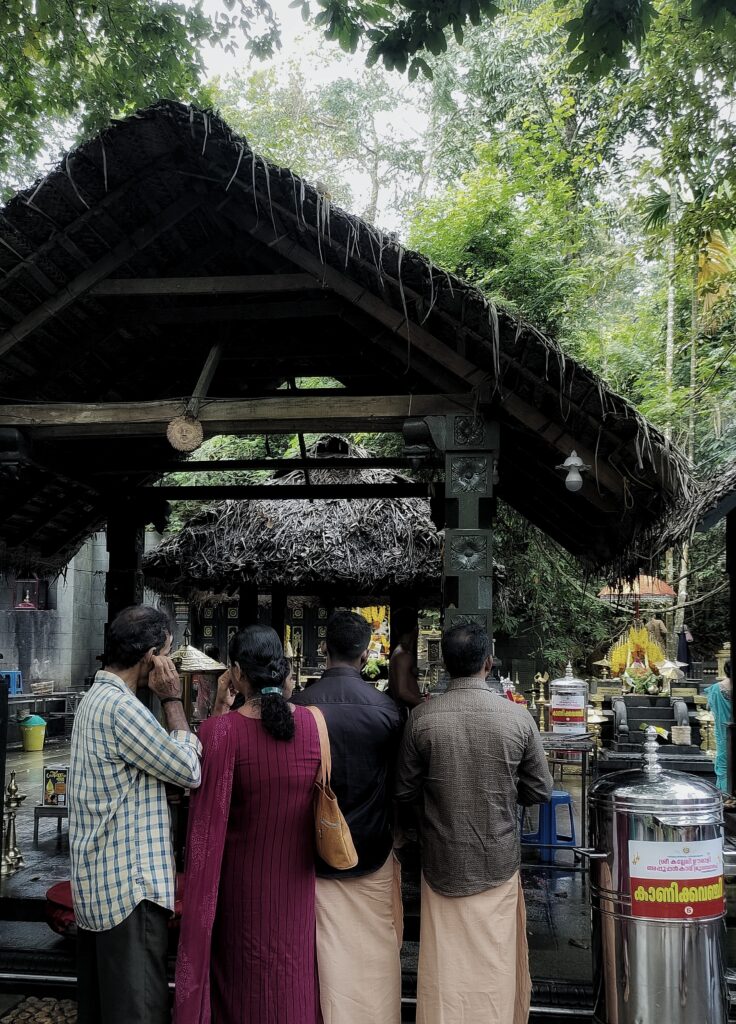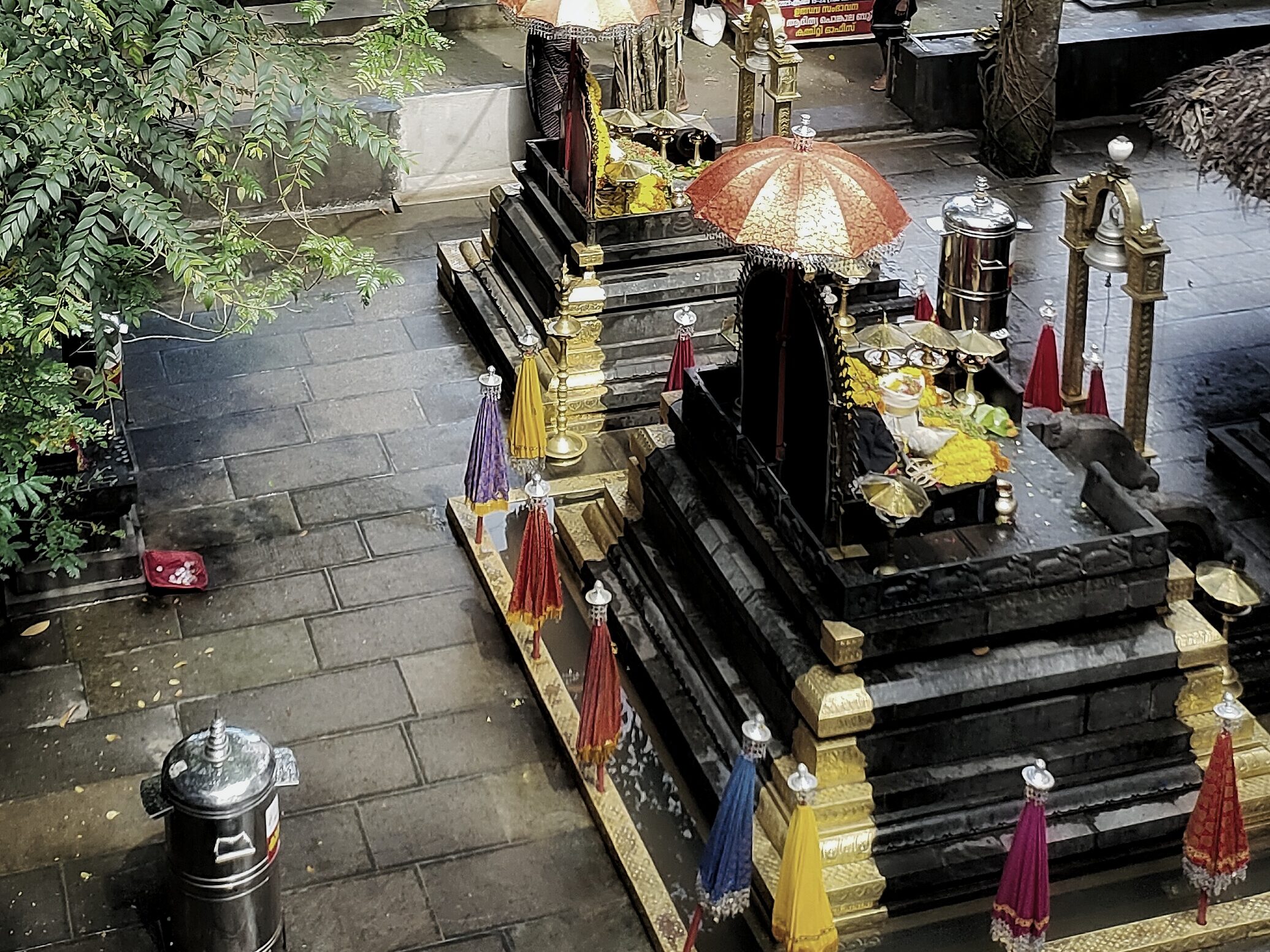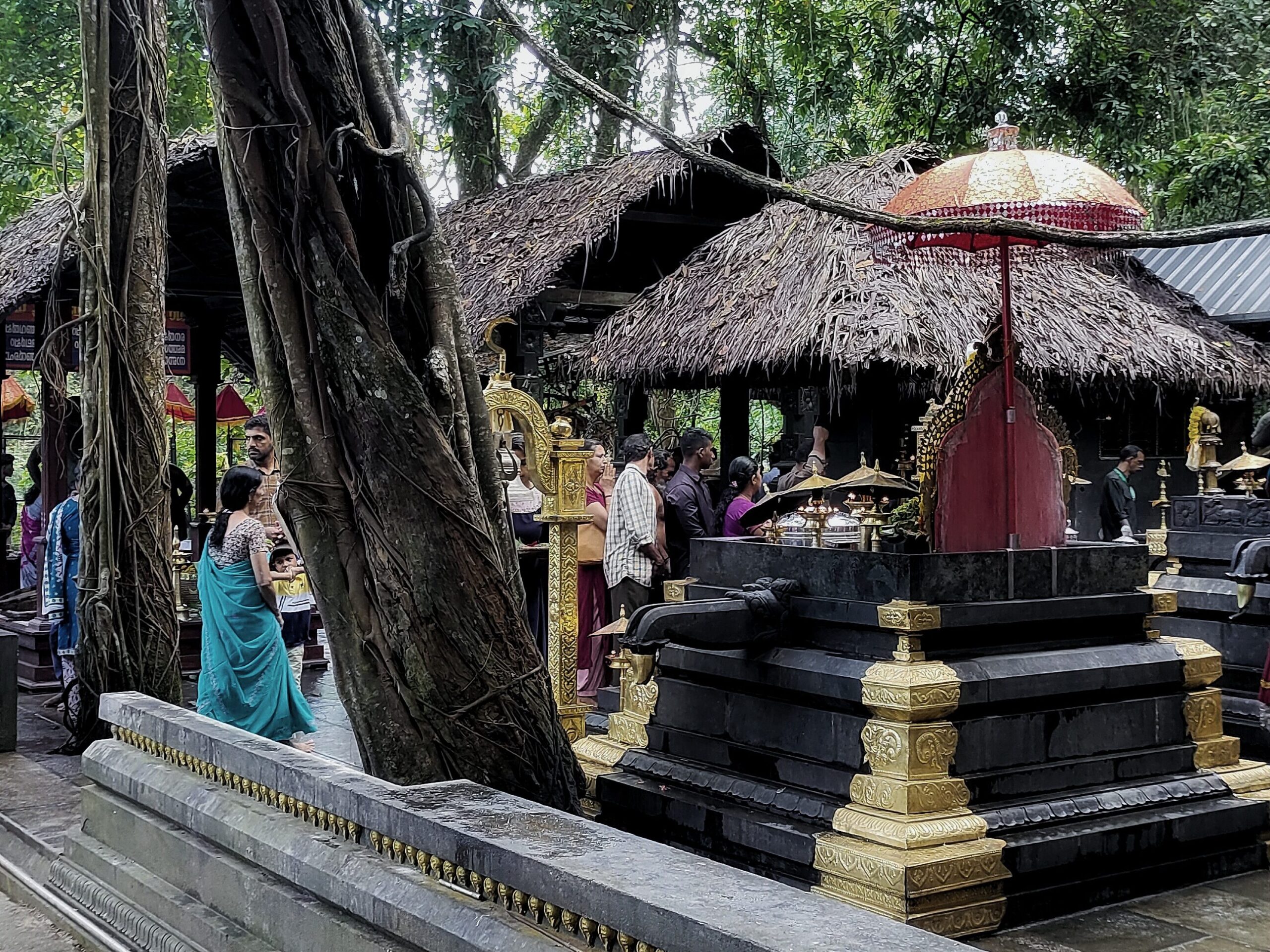Kerala is a majestic land with diverse cultural variations. Whether we are traveling from east to west or from north to south, these variations are clearly visible. This blog is about a journey we undertook to find one such unique cultural symbol located on the foothills of the Western Ghats — the Kalleli Oorali Appooppan Kaavu (Sacred Grove).

The Journey Begins
The journey took place in June 2024. It was a rainy day, and the heavy monsoon winds were slashing against the Western Ghats, bringing with them a relentless downpour. We began our journey from the hill town of Punalur, located in the Kollam district of Kerala. After exploring the great bridge built by the British, we continued onward. Our destination was Tenkasi, located in Tamil Nadu. To reach it, we had to cross the Western Ghats.

Among these hills, there are multiple small pathways that were once used by the people of both states to travel. However, these routes pass through dense forests filled with elephants and tigers. We too embraced this adventure.
Into the Konni Forest: A Hidden Temple Emerges
After reaching Konni town, we officially entered the Konni forest range. The forest guards gave us strict instructions not to step out of the car during the journey, as elephant attacks are common in the area.
Finally, we entered the jungle. The thick shades of green blocked almost all the light from reaching the road. Raindrops from the downpour trickled through the dense canopy of leaves. The road was in poor condition, but one could not expect much better within a forest range.

Oorali Appooppan Kaavu: Sacred Grove with Tribal Roots
Amidst the journey, we stumbled upon something very unexpected. We saw rows of cars parked inside the forest. Yes, there was a hidden temple within the forest range — the Oorali Appooppan Kaavu.
Sacred groves are deeply rooted in our culture, but I found this one to be particularly special due to the unique rituals and architecture. Have you ever heard of a temple where devotees are supposed to pray loudly? Yes, in this temple, that is the tradition. If someone has a wish they want fulfilled soon, they can visit this temple and pray aloud.

It is believed that anyone entering the forest must pray loudly so the entire forest hears their sorrow. One is expected to leave the place transformed after expressing their troubles to Oorali Appooppan. This temple is closely connected to the tribal culture of Kerala. It follows the traditions and rituals of the early Dravida–Naga tribes and is entirely different from the tantric procedures and poojas typically conducted in mainstream Hindu temples.
the rituals of the tribe
On the banks of the Achankovil River, I saw numerous people praying. This perennial river was flowing in full force. The tribal rituals are performed by the Kurava tribe, one of the communities residing in the Western Ghats. A moopan (village head) serves as the head priest. Devotees are supposed to share their wishes with him, and he blesses them by chanting special mantras in front of the local deities, often standing beside a sacred tree.

It was a mesmerizing experience to hear the flowing river alongside the spiritual ambiance of the sacred grove. Monkeys added to the atmosphere, swinging through the trees and contributing to the overall mystique.
Oral History and Architecture
As far as I know, the history of this temple exists only in oral form. Locals say the temple is 1,155 years old, dating back to the Chera period. They also speak of the influence of various local kingdoms, continuing up to the Travancore dynasty. I am not diving deep into the history here, but architecturally, the kaavu was striking.

The sacred grove contains multiple trees within its complex, each with unique granite platforms. One of the most distinctive features is the use of palm leaf roofing, which is not commonly seen in temples. The proportions of the shrines are slightly smaller than those in mainstream temples, which adds to the uniqueness. In between the majestic courtyards of small shrines, we can see the devotees chanting with mantras. But I was wondering, when should have the manthras of mainstream temples reached to these sort of tribal groves? Interestingly, the temple also uses natural elements like trees as integral parts of its worship. I can see that the temple was renovated multiple times by adding granite flooring and other amenities. I can see numerous unnecessary additions which include the GI sheet roofing for some shrines, which is alienating the entire spiritual experience in the temple.
Rituals include the use of toddy and betel leaves, symbolizing a deep connection with local natural resources. Appoppan is considered the lord of 999 Mala Daivangal (mountain gods), while Ammoomma is believed to be his mother.
There were dieties of Ganesha, Parashakti, Yakshiamma, Nagaraja, Nagayakshi, Raktharakshas, Kuttichathan and many more.
Except for Ganesha, all others are local deities that emerged from the stories, experiences, and warrior legends of the tribal people throughout history.

A Sacred Space Worth Preserving
Before leaving, I realized that this is a temple that must be preserved to showcase the identity of our ancient tribal culture. Personally, I feel that there should be certain restrictions placed on visiting this temple. It is a sacred and unique space. Unfortunately, it is becoming increasingly commercialized, which may eventually deteriorate the temple’s true essence.
Those who wish to read more about Oorali Appoppan Kavu, Visit the link below,
https://www.onmanorama.com/travel/kerala/2022/07/29/kallely-oorali-appooppan-kavu-achankovil-pathanamthitta-traditions-customs.html
Those who wish to read about the temples on eastern side of Western Ghats, go through the link below,
https://heritagevedanta.com/thirukurungudi-nambi-temple-a-hidden-gem-in-the-ghats/
An experience from the journey my friend Sidharth and I took back in June 2024.
Discover more from HERITAGE VEDANTA
Subscribe to get the latest posts sent to your email.
